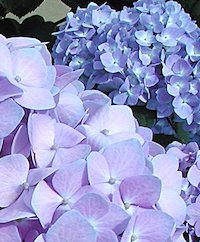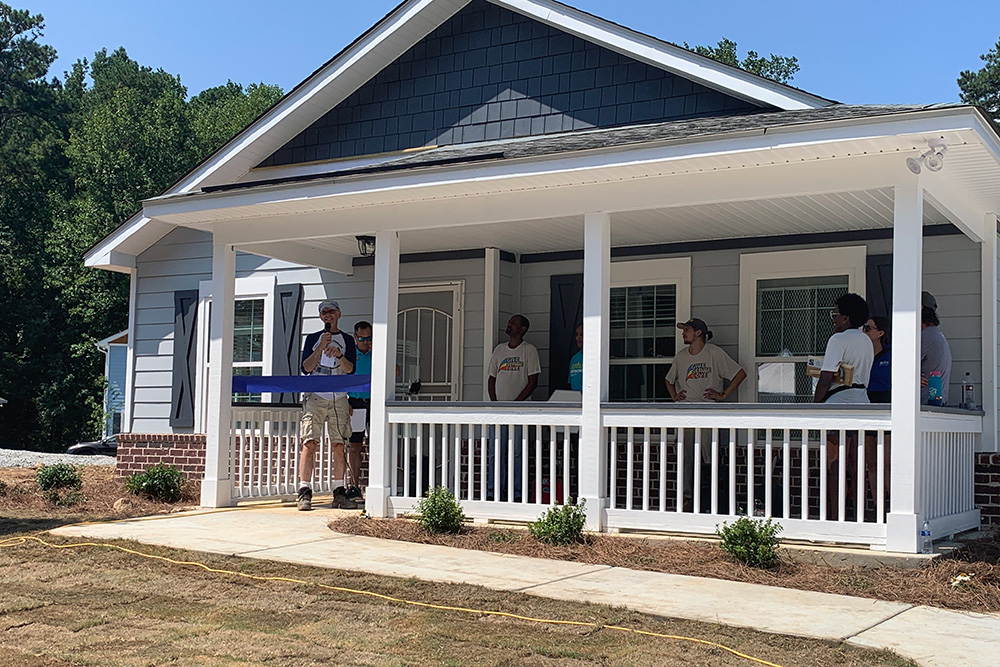As summer slowly melts into fall, temperatures are still reaching the high 90s and many plants wilt in the afternoon sun.
Plants with big leaves, such as hydrangeas and angel trumpets, are often the first to get a little droopy in the hotter part of the day. It’s very tempting to water plants that are wilted at the end of the day, but late afternoon is not the best time of day to determine whether your landscape plants need water.
There are two problems with watering in the afternoon. First, water that remains on the leaves of plants throughout the evening is more likely to invite disease problems. For example, hydrangeas and roses are highly susceptible to leaf spot diseases such as Cercospora, anthracnose or black spot.
Watering in the morning as the sun rises allows leaves to dry more quickly and minimizes these disease problems. It is even better to avoid wetting the leaves at all and just water the roots with a drip irrigation system. If you hand-water your plants, invest in a watering wand with a water breaker nozzle that can be used to apply water directly to the roots. Remember, don’t water the leaves.
The second problem with watering in the afternoon is that people have a tendency to water plants that don’t actually need watering. Although many plants appear wilted in the afternoon, that doesn’t always mean they need water.
Wilting is an adaption that many plants use to reduce water loss during the hottest part of the day. A wilted leaf has less surface area exposed to sunlight and therefore will not lose water as quickly.
Plants that are wilted in the afternoon will often perk back up at night and look perfectly happy by morning. If the plants’ leaves do not appear stressed in the morning, they can probably go another day or two before needing water.
In some situations, plants that are watered every afternoon may get too much water from their well-intentioned caretaker. Georgia red clay soil can hold water for several days after a good soaking rain. One inch of rain or irrigation will soak clay soil several inches deep. Established landscape plants and mature trees can extract this water and maintain their water needs without needing any additional rain or irrigation for seven to 10 days.
Newly planted trees and shrubs may need supplemental water more often for the first couple of years until their roots grow deep enough to seek out water in the subsoil. Let the plants tell you when they need water.
Even new trees and shrubs can go a couple of days without being watered. When you do water, soak the soil deeply to encourage deeper rooting — this will pay off in the long run as the plant acclimates to its new environment and is able to take care of itself for extended periods of time without rain.
Adding a few inches of mulch around trees and shrubs will conserve soil moisture and help reduce extreme temperatures and drying of surface roots.
Permanent wilt may happen if plants remain wilted even after you water them. There are certain soilborne diseases — such as Fusarium wilt, bacterial wilt, and Phytophthora — that can infect the stems or roots of plants and literally stop the flow of water. This is a common problem in vegetables like tomatoes and certain landscape plants such as rhododendrons. The plants might start out with one or two branches that wilt and then eventually the entire plant wilts. Unfortunately, there are no effective treatment options for plants infected with one of these permanent wilt diseases.
Ironically, infected plants often wilt more dramatically in the early stages of the disease, especially in the afternoon. This causes people to water them more often. Excessive watering actually helps these diseases spread. To remove the fungal disease, dead or dying plants, along with the soil around the roots, should be completely removed. The spores of these diseases can survive in the soil for many years and infect the next plants you try to grow there.
Sometimes, these diseases hitchhike on infected plants bought from nurseries. It’s always a good idea to inspect the roots before you buy a plant.
Gently slip the plant out of the nursery pot and examine the roots all the way to the bottom. A healthy plant will have white, healthy roots throughout the soil. An unhealthy plant will often have black or brown roots on the lower third of the root ball. This could indicate the plant was overwatered at the nursery or may already be infected with a root disease.
For more information on growing healthy plants and other agriculture topics, see the University of Georgia Cooperative Extension publications at extension.uga.edu/publications.







